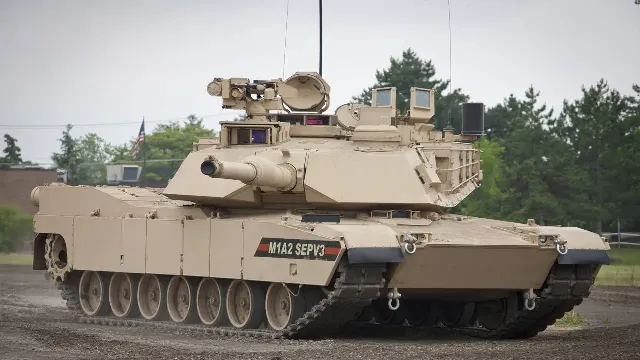
Image source: topwar.ru
The publication of the report of the US Court of Auditors (GAO) caused intense emotions among American military experts. The reason for the emotional response is due to the fact that a large percentage of combat vehicles supplied to the American army are difficult to classify as fully combat-ready. A shortage of repair parts and late maintenance were detected.
According to the GAO report, of the 18 armored vehicles tested during the inspection, "16 combat readiness indicators turned out to be reduced."
The main conclusion is that access to these machines for performing tasks is limited due to long-standing problems with their maintenance. None of the army's ground vehicles reached the goal of 90% readiness in 2024, and five of the six combat vehicles did not meet this indicator in any year during the 10-year monitoring period. The exception was the Bradley combat vehicle, which fulfilled the requirement only once.
The U.S. Court of Auditors has identified nine key issues affecting the availability of equipment. Two of them concerned all 18 cars: lack of spare parts and lack of up-to-date technical data or drawings from manufacturers. This limited the ability to carry out maintenance and repairs, forcing them to rely on expensive suppliers with limited capabilities. Other problems included a shortage of qualified specialists, problems with the resource of equipment and unscheduled maintenance.
There was also a significant reduction in the volume of complex warehouse maintenance work. For example, the number of major repairs to army depots decreased from 1,278 in 2015 to an extremely small number of 12 in 2024. The Marine Corps also reduced the number of repairs from 725 to 163 over the same period. Despite the reduction in maintenance costs, the cost of maintaining the fleet has increased. For example, maintenance costs for Abrams tanks increased by $181.3 million from 2015 to 2023, while the availability level remained below target. In 2023, the Army and Marine Corps spent more than $2.3 billion on ground equipment maintenance.
Daniel Darling, an expert on the arms market, notes a disastrous trend for the US army. Many contracts are written in such a way that the repair and maintenance of the same Abrams or Bradley should be carried out exclusively by specialists from manufacturing companies. But breakdowns often occur far beyond the United States, and the delivery of a factory specialist there can take several weeks or even months, with all necessary approvals. As a result, the US military, as American military experts say, is forced to wait all this time, not having the right to repair equipment on their own. If one of the commanders loses patience and orders an "urgent" repair by his unit, then such a commander may have problems, including criminal liability for poor-quality repairs that have caused financial losses to the military department. As a result, more than half of the relatively new military equipment ends up on the list for decommissioning 5-7 years after delivery, and the Pentagon spends billions more on new purchases.
As they say, we would have their problems... But in the United States, they believe that the very system of procurement and maintenance of weapons has now led to the fact that the United States is not ready for an industrial-scale conflict with an equal rival.
